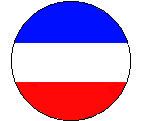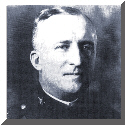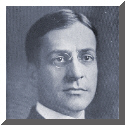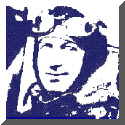The Story of the American Expeditionary Forces |
 AEF Headquarters |
BG Dennis NolanFather of American Military Intelligence
|
|
Excerpted from Professor Cooke's
Pershing and His Generals: Command and Staff in the AEF Praeger, 1997. Available at Greenwood Publishing |
 |


Brigadier General Nolan
But there was no Leavenworth for intelligence officers. When the United States went to war there were only four men in the War Department who were really trained as intelligence officers. The Department tried to institute a short course for designated intelligence officers at the Army War College, but that did little to help, because the AEF was moving much faster than Washington ever could. By August 1918, as the AEF was preparing for the St. Mihiel operation, the army in the United States still did not have a school in place.
 BG Drum |
Dennis E. Nolan can very well be called the father of U.S. Army intelligence. He looked like a professor, but he could fight with daring and courage, winning the Distinguished Service Cross on 1 October 1918. Born in Akron, New York, to Irish immigrant parents, Nolan graduated from West Point in 1896, after an excellent academic and a stellar football career. Twice cited for gallantry during the Spanish-American War, Nolan saw service in the Philippines. From 1902 to 1903 he was a professor of history at West Point, and he was selected to serve on the first General Staff in Washington, in the intelligence section. On board the Baltic in 1917, Pershing selected Nolan as his intelligence chief.
Nolan went about the business of establishing the intelligence service of the AEF, and he built it from nothing. Having served as Pershing's adjutant general while in the Philippines, Nolan had been hesitant to press Pershing for a position on the AEF staff. James Harbord also knew Nolan from the Philippines, as Nolan had served under him on the island of Luzon. It was Harbord who got Nolan a spot on the original staff and convinced Pershing to make him the intelligence chief.
Even before arriving in France, Nolan knew that three things had to be done to make intelligence work for the AEF. The intelligence officers of the AEF down to division level had to be trained; there had to be a flow of accurate information upon which to base tactical and operational decisions; and the AEF would have to take advantage of every opportunity to learn from the British and French and adopt what methods and procedures worked for them. Nolan knew that Washington could not be relied upon for information, that in fact the AEF would have to be the source of information for the War Department. "Nothing gets old so quickly as intelligence," Nolan later wrote: "You have no interest in what occurred before or during the last battle as you are getting ready for the new always."

Pershing & His General Headquarters Staff
L-R: Fiske, Andrews, McAndrew, Eltinge, Pershing,
Nolan, Connor, Davis, Van Horn Moseley
Where would Nolan get those all-important subordinate officers? The Chief of Military Intelligence of the General Staff in Washington cooperated fully with Nolan and instituted a short course for junior officers at the War College. Most of the first officers who graduated from it were from the reserves, and all of them came from the engineer branch of the army. The first set of seven lieutenants had originally been assigned to the Adjutant General's statistical section, and were then selected, because of their knowledge of either French or German and their aptitude, for intelligence work. Nolan was happy to get them and put them to work when they arrived in France in November 1917. . .
Pershing, on the other hand, constantly pushed Nolan to get as much operational information as possible from the British and the French. In March, and again in May, Pershing asked Nolan to step up his efforts as to the exact situation at the front. Nolan had great difficulty in finding out what the status of combat was, due to the chaotic nature of the fighting at the time. This was a valuable lesson, for in the fall of 1918 he would have difficulty in getting the exact same information from the American divisions engaged in baffle.
Normally Nolan spent the day in the offices of the G-2 section, not leaving until about 9 P.M. He was concerned that his own section might lose sight of their relationship with other general staff sections. Reflecting on the AEF G-2 section, Nolan later wrote, "It is a tendency of each division of the general staff to get into a watertight compartment and stay in it without knowing the activities that are going on in the other divisions of the staff. This is especially true of the intelligence service the members of which frequently prided themselves on not knowing anything about their own army and everything about the enemy." Nolan made certain that the G-2 section had a representative at every important meeting at Chaumont. While he usually did not attend himself, he sent his deputy, Colonel Arthur Conger.
One of main functions of each day was the preparation of the summaries of information and of intelligence, two separate documents. The summary of information was more general in nature and gave updates as to what was happening in the diplomatic and economic world. The intelligence summary was very much akin to the modern summary known as the INTSUM. This document contained the situation of the day, both allied and enemy, special items of interest (such as new weapons, etc.), and other items of information, such as techniques for handling prisoners of war. The main thrust was to identify enemy units in the line and describe their activities and locations. This document was sent to subordinate commands, such as corps and divisions. A copy was usually mailed to the War Department in Washington. Usually a weekly summary was prepared for the War Department, but when the AEF went into combat the weekly summary was simply dropped. . .
 Sec. War Baker |
When Colonel R H. van Damen visited Langres [from the War Department] he was impressed with what he saw; he informed Colonel Marlborough Churchill, chief of the military intelligence branch at the War Department, that Nolan hoped to develop a "duplicate set" of instructors to send back to the United States, if needed. Van Damen also passed on to Churchill that the National Guard and reserve officers were doing well, but arrived at Langres woefully lacking in such basic skills as map reading. Van Damen suggested, in the strongest terms, was that officers slated for intelligence work in the AEF's divisions be given serious training at least in map reading. . .
 BG Billy Mitchell |
Nolan was well known as a team player with an even personality. He did not have a reputation as a man who made enemies or carried a grudge. Nor was Nolan hidebound in his selection of officers to fill intelligence positions. As far as he was concerned, there were certain qualifications which had to be met, and it really did not matter whether the qualified officer was a regular, a Guardsman, or a reservist. When the G-2 position at I Corps came open in the fall of 1918, Nolan selected Lieutenant Colonel Noble Brandon Judah, the G-2 of the 42nd Division. Judah, a lawyer from Chicago, came to France as a National Guardsman, serving in a Guard division. What appealed to Nolan was Judah's record of solid accomplishment with the Rainbow Division, regardless of the source of his commission.
Pershing had every reason to be pleased with Nolan's performance as the AEF's G-2. He had built a solid organization based on experience and a very well-run intelligence school at Langres. Nolan realized the ultimate reward for his work when, on 28 September 1918, he was assigned to command the 55th Infantry Brigade of the 28th Infantry Division. The 28th, a National Guard unit from Pennsylvania, was under the command of Major General Charles H. Muir and was involved in the heavy fighting in the Argonne Forest.

The Argonne Where Nolan Served with Distinction
Editor's Note: General Nolan had a distinguished Post-WWI career, retiring in 1936 as a Corps Commander. He died in February 1956 at 83.
To find other Doughboy Features visit our |
Membership Information  Click on Icon |
For further information on the events of 1914-1918
visit the homepage of |
Michael E. Hanlon (medwardh@hotmail.com) regarding content,
Original artwork & copy; © 1998-2005, The Great War Society